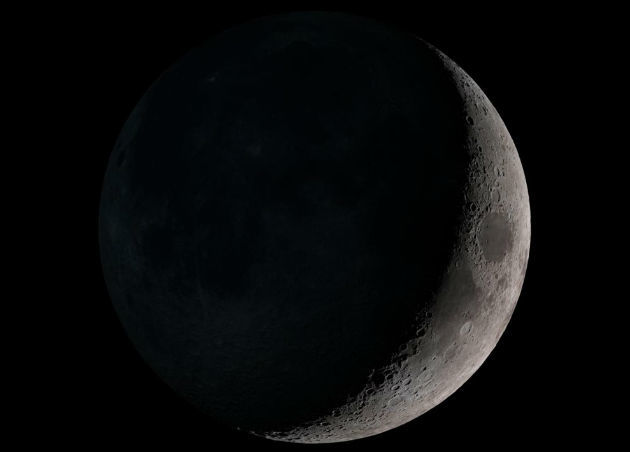The phases of the Moon represent the different aspects that we see the Earth’s natural satellite over a cycle. This happens due to the variation of its position in relation to our planet and the Sun.
The Moon has four phases: new, growing, full and waning. Each of them lasts about 7 to 8 days.
Not being a star, the Moon does not emit its own light. However, we see it illuminated because it reflects light from the sun.
The Moon has three main movements:
- rotation: about its own axis
- revolution: around the Earth
- translation: around the Sun, along with the Earth.
In this way, it assumes different positions in relation to the Earth and the Sun. This causes its illuminated part to be seen in different ways along a lunar cycle. It is important to note that the phases of the moon are seen differently in the southern and northern hemispheres.
The 4 phases of the Moon
1. New Moon
At this stage, we are unable to observe the Moon because it is positioned between the Sun and the Earth and, therefore, we do not see it at this time.
At this stage, the Moon is in the sky during the day, rising at around 6 am and setting at around 6 pm.

2. Crescent Moon
The crescent or quarter moon receives this name because at this moment we can only observe ¼ of its totality.
Its shape is a semicircle and, at this stage, the Moon rises at approximately noon and sets at approximately midnight.

3. Full Moon
In the phase of the full Moon, the Earth is between the Sun and the Moon and, therefore, we are able to observe the entire satellite illuminated entirely by the Sun.
At this stage, the Moon rises at approximately 6 pm and sets at approximately 6 am the next day.

4. Waning Moon
The waning moon or waning moon is the last stage of the phases of the moon. In this period, it is in the shape of a semicircle and thus, again we can observe ¼ of its totality in the opposite direction of the crescent phase.
At this stage, the Moon rises at approximately midnight and sets at approximately noon.

The Moon cycle
The Moon Cycle or Lunation Cycle, also called the Synodic Period of the Moon, occurs in approximately 29.5 days.
It is therefore known as the lunar month and during this period the 4 phases of the Moon take place, that is, the complete lunar cycle occurs.
In the Sidereal Period, the time it takes the Moon to rotate around its axis (rotation) is 27.3 days and this is also the time it takes to orbit around the Earth (revolution).
Therefore, the sidereal month is considered to be approximately 2.25 days shorter than the synodic month.
Video about the phases of the Moon
The video produced by NASA shows the phases of the Moon at hourly intervals throughout 2018, as seen from the southern hemisphere.
Curiosities about the Moon
- The “Super Moon” or “Super Full Moon” is characterized by the moment when the full moon is closest to Earth. At this point, it appears bigger and brighter.
- Eclipses are phenomena that occur when the Sun, Earth and Moon are aligned. Solar Eclipses occur during the New Moon, when the Moon is between the Earth and the Sun. Lunar Eclipses occur during the full Moon, when the Earth is between the Moon and the Sun.
- One of the most famous albums by the English band Pink Floyd mentions the dark side of the Moon (” The Dark Side of the Moon “), however, all the faces of the Moon are illuminated by the Sun. What happens is that due to the period of rotation of the Moon being the same as its period of revolution, there is a face that we never see from Earth, which would be this “dark side of the Moon”.

